Hurricane Ian heads for Carolinas after ravaging Florida
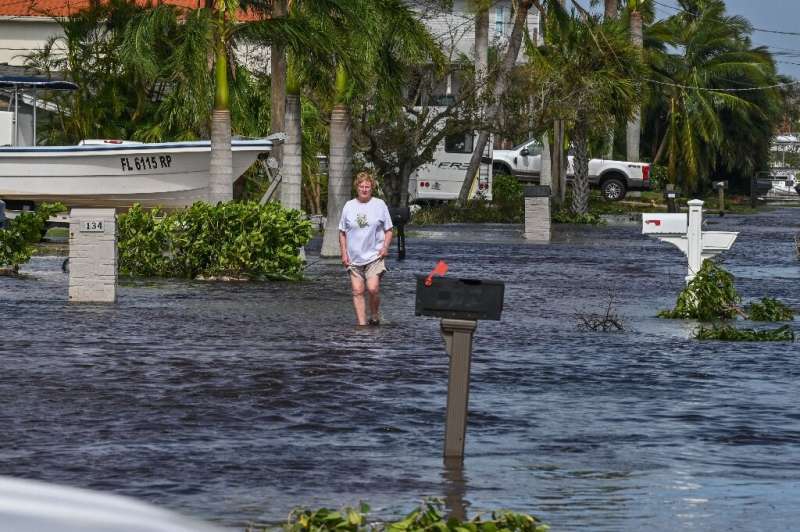
Rescue workers went door-to-door in Florida on Friday to assist survivors of Hurricane Ian as the Carolinas braced for the arrival of the Category 1 storm.
Ian, one of the most powerful hurricanes ever to hit the United States, left a trail of devastation across Florida and officials said they have received reports of at least 20 deaths in the southern state.
After weakening as it crossed over Florida, the storm regained strength over the Atlantic and is bearing down on the coast of South and North Carolina packing maximum sustained winds of 85 miles per hour (140 kilometers per hour), the National Hurricane Center (NHC) said.
It warned Carolina residents that Ian could bring "life-threatening storm surge" of up to seven feet (two meters) and damaging winds.
The storm left hundreds of people in need of rescue in Florida, many trapped in flooded homes.
Governor Ron DeSantis said more than 1,000 rescuers were going "up and down the coastline" checking on residents.
"Rescue personnel have gone to more than 3,000 homes in the hardest hit areas, going door to door to check on the occupants of those residences," he told reporters.
Helicopter crews also plucked people from the rooftops of homes inundated by floodwater while other rescues were made by boat.
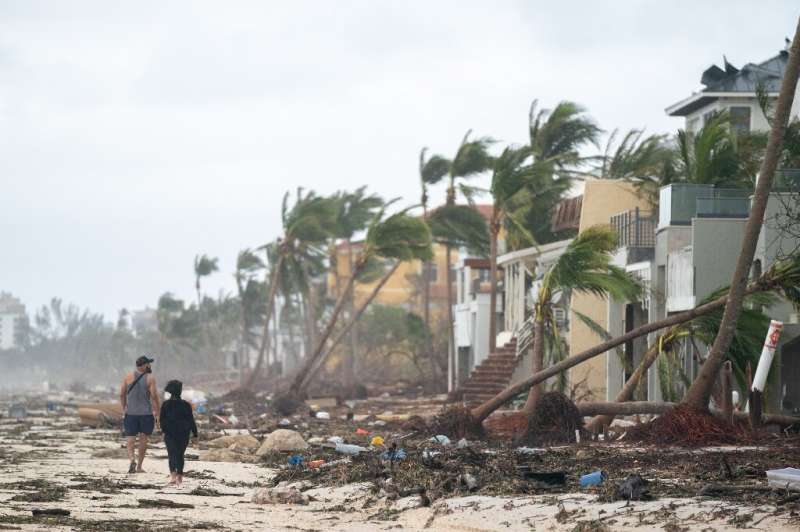
DeSantis said the coastal town of Fort Myers where the hurricane made landfall on Wednesday afternoon, was "ground zero" but "this was such a big storm that there are effects far inland."
Many people evacuated, but thousands chose to shelter in place. DeSantis said Florida officials had so far contacted 20,000 people who chose to stay.
DeSantis said that it was too early to give a death toll, and that concrete information about casualty numbers could be expected over several days.
State officials said there had been one confirmed death from the hurricane and at least 20 others had been reported but have not yet been confirmed as being due to the storm.
In addition, 17 migrants were missing from a boat that sank during the hurricane on Wednesday, with one person found dead and nine others rescued, the Coast Guard said. Among them were four Cubans who swam to shore in the Florida Keys.
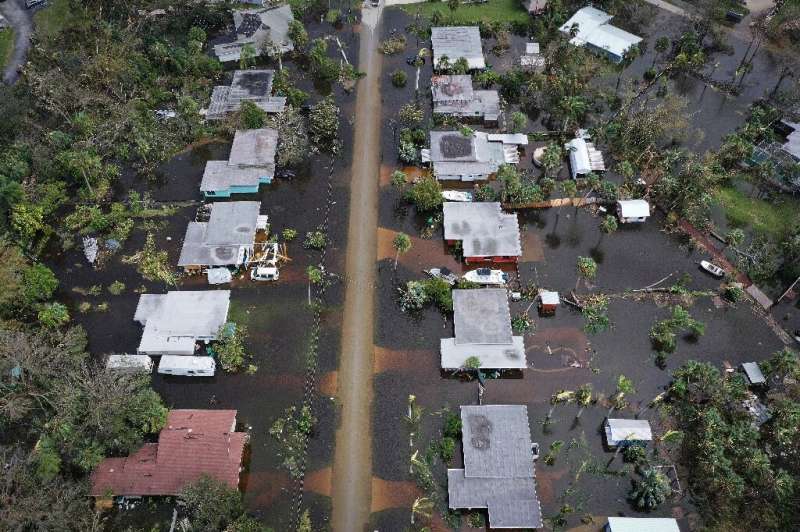
'It was all submerged'
In Bonita Springs, Jason Crosser, 37, was inspecting the damage to his small store.
"The water went over the whole building. It was all submerged," Crosser said. "It's all saltwater and water damage."
After making landfall in South Carolina, Ian is expected to weaken fast and dissipate by Saturday night.
Fort Myers, where Ian came ashore as a monster Category 4 storm, took much of the brunt, as streets became rivers and seawater poured into houses.
Dozens of boats moored in the marina were sunk while others were tossed onto downtown streets.
DeSantis described the destruction as a "500-year flood event."
He said about 1.9 Florida residents remained without power on Friday.
Two barrier islands near Fort Myers, Pine Island and Sanibel Island, popular with vacationers, were essentially cut off when the storm damaged causeways to the mainland.
-
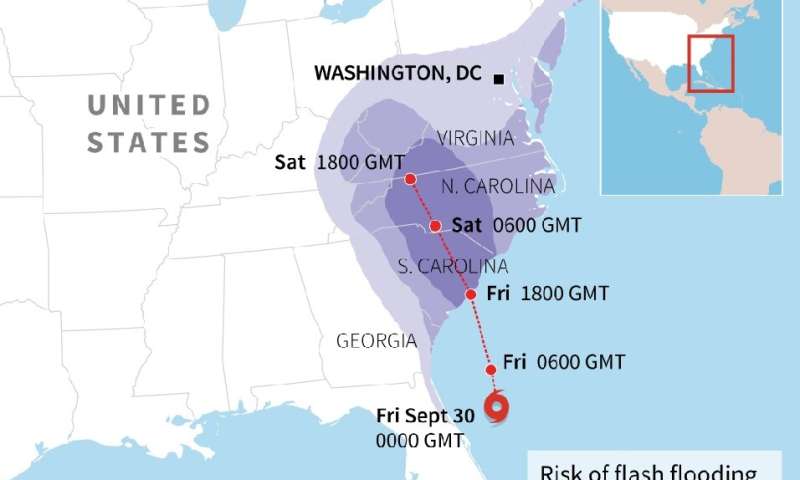
Map showing the greatest flash flood risk over the next three days in the United States due to Hurricane Ian. -
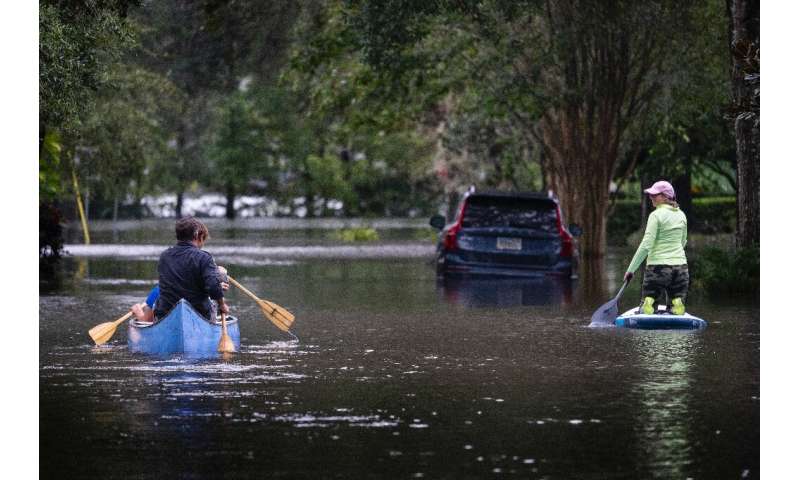
Hurricane Ian left much of coastal southwest Florida in darkness early on Thursday, bringing 'catastrophic' flooding. -
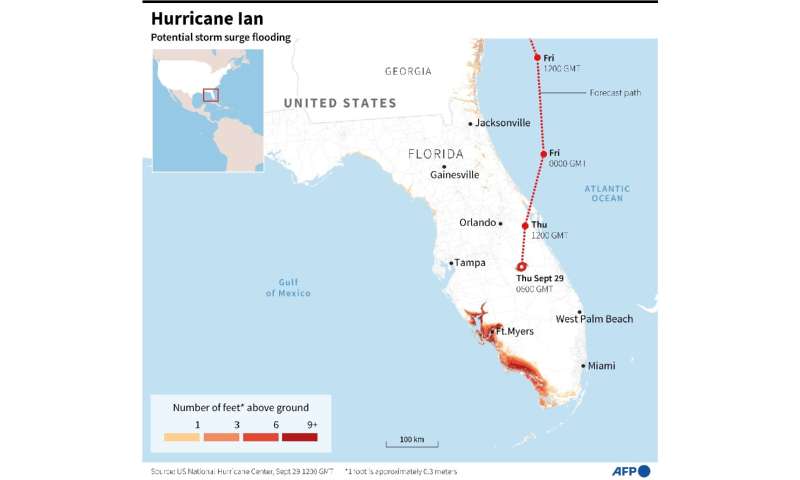
Map showing potential storm surge flooding in Florida and nearby states due to Hurricane Ian.
Electricity returning in Cuba
Before pummeling Florida, Ian plunged all of Cuba into darkness after downing the island's power network.
Electricity was gradually returning, but many homes remain without power.
Laura Mujica, 20, joined dozens of Cuban women gathered in the capital Havana on Thursday to demand electricity be restored.
"We took to the street, because we haven't had electricity for several days and we are tired of it," Mujica said.
Human-induced climate change is resulting in more severe weather events across the globe, scientists say—including with Ian.
According to a rapid and preliminary analysis, human-caused climate change increased the extreme rain that Ian unleashed by over 10 percent, US scientists said.
© 2022 AFP




















